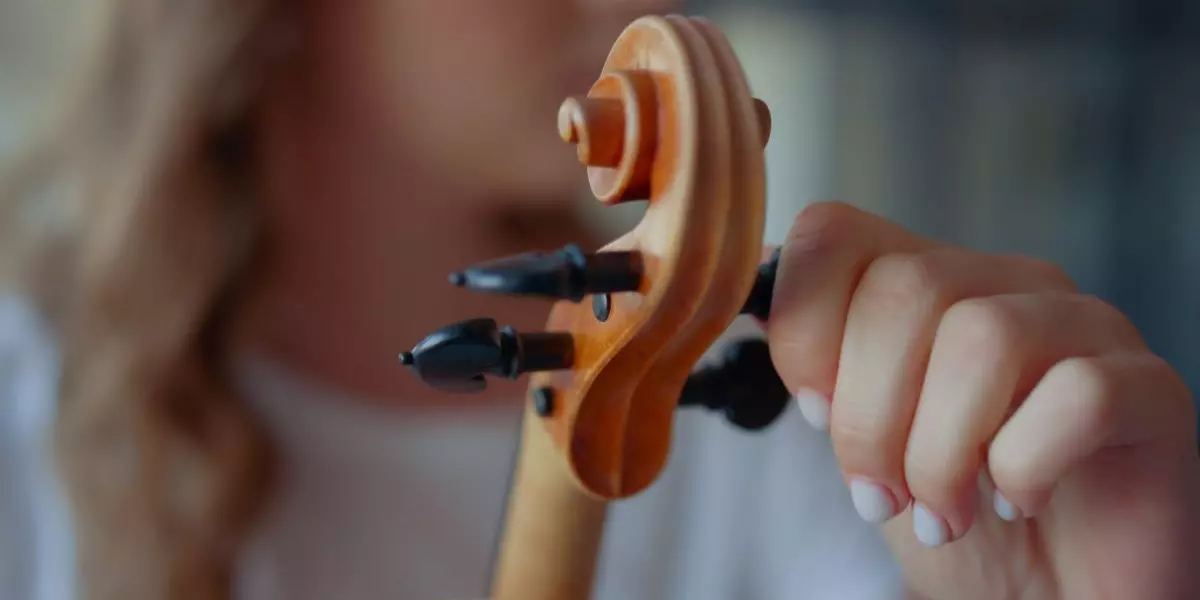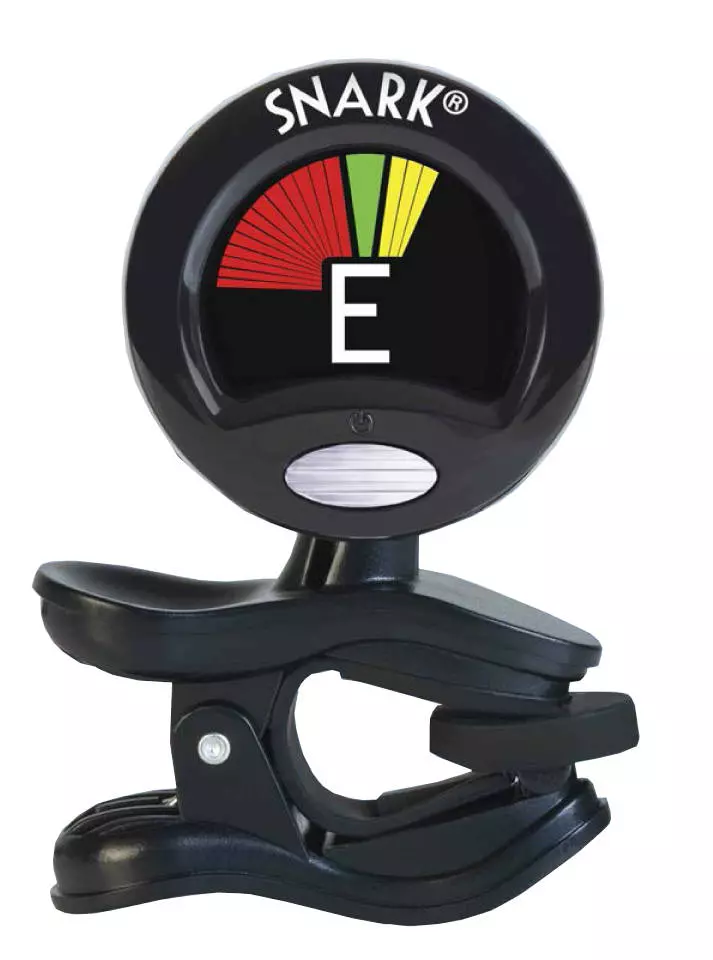How to Tune a Violin

The violin is an instrument renowned for its exquisite and emotive sounds. It relies heavily on precise tuning to produce its characteristic tone and sound.
Tuning a violin involves adjusting the four strings tuned in perfect fifths. This process is essential to maintain the instrument's tonal quality and ensure it produces the desired notes accurately.
Proper tuning is crucial for musicians who play in an ensemble, ensuring that multiple instruments blend seamlessly to create a cohesive musical experience. One person in the ensemble playing out of tune affects the sound of the whole group.
This guide will explain the four strings of a violin, two different tuning methods and answer frequently asked questions about violins.
Notes of a Violin
Before you can start tuning your violin, it's important to know what notes you need to tune your instrument to.
Looking directly at a violin, the four strings of the violin in standard tuned from left to right are:
- G note
- D note
- A note
- E note
It’s important to note a standard violin has 4 strings, but other-size violins have five, seven, or even eight strings.
The G string is the thickest and the E string is the thinnest. These strings, each producing distinct tones, provide the foundation for the violin's rich and diverse sound palette. Recognizing the sound of each string is essential for mastering the instrument and identifying tuning problems.
Most violins are tuned to G-D-A-E, but some fiddlers tune their instruments differently for various music styles. Tunings such as “Open G,” “Cajun Tuning,” and “Old-Timey D” are some popular alternate tunings.
How to Tune a Violin
There are two adjustable methods for changing the pitch on your violin:
- Tuning the pegs
- Using a fine tuner
Using the Pegs to Tune a Violin
The pegs sit at the top of the violin. You can turn the pegs on the violin to increase or decrease the tension of the violin strings, thereby altering the pitch up or down. Adjust the pegs slowly to ensure accurate tuning without causing damage to the strings or the instrument.
When re-stringing a violin or making large adjustments, it is best to use the pegs to get close to the desired tuning. Once you are close to the desired note, you can use the fine tuners located near the tailpiece to tune the violin.
Using the Fine Tuners to Tune a Violin
Fine tuners help adjust string tension for better tuning without making large changes to the pegs. This makes tuning easier and more precise. Fine tuners quickly and efficiently enable users to make small adjustments.
To adjust the pitch, turn the turner dial clockwise to raise the pitch or counter-clockwise to lower it. If you turn the dial too far clockwise it will become too tight and you will need to loosen it. Likewise, if you turn the dial too far counter-clockwise, the dial will fall out. You can insert it back in and begin to tighten the strings.
Understanding how to use the pegs and fine tuner on a violin are essential for musicians looking to maintain accurate tuning.
Tuning Methods
Now you know how to tune a violin, the next step is to tune the pitch to match your preferred tuning. Various methods are available to successfully tune a violin. Each method caters to different preferences and circumstances.
The two most common ways to tune a violin are:
- Using a piano (or another instrument)
- Using an electronic tuner
Using a Piano to Tune a Violin
To tune a violin using a piano, begin by playing the corresponding notes on the piano for each string. Listen carefully for any pulsating sound. If the pitch of the string is not correct, the beats will be fast.
Adjust the tension of the string in small increments with the fine tuners and pay attention to how the beats change. If the beats are slowing down, you're moving in the right direction. Continue making adjustments until the beats disappear completely, indicating that the two strings are perfectly in tune. You can use any other instrument that is in-tune as well to tune your violin.
Long & McQuade also sells pitch pipes which will give you the reference note for each string. This method is not for beginners as you need to develop your ear before this method is accurate. As you become an expert violinist, you will train your ear to recognize different pitches. Eventually, one day you will be able to tune your violin by ear.
Using an Electronic Tuner to Tune a Violin
Electronic tuners provide a convenient and accurate way to tune a violin. Electronic tuners are the easiest method to tune your violin because they are easy to use and accurate. The tuner will listen to the pitch and notify if your note is in tune, too sharp, or too flat.
The tuners utilize a small LED screen with a pointing needle or a visual display with lights. These lights indicate the accuracy of the string's pitch, enabling users to make precise adjustments easily.
As you increase or decrease the tension of the violin strings the display will show you the current pitch. When you increase or decrease the tension on the tuning pegs, you will see a change in pitch. When the string has its proper pitch, the display will let you know if you are in the proper pitch.
The Snark violin tuner is affordable, accurate, and easy to use.
Learning to tune your guitar is an essential skill to ensure the music you're playing sounds correct. Whether you're a beginner or an experienced violin player, there is a tuning method that will suit your needs. It doesn't matter if you're starting or have been playing for years. There is a tuning method that can help you achieve the sound you desire.
Click here to see some of the electronic tuners we offer at Long & McQuade that will help you tune your violin accurately.
Now that you have learned how to tune a violin, you are one step closer to learning to play the violin. As a beginner violinist, it is important to understand key concepts when learning. Examples include learning how to read sheet music, finger placement, time signature, and how holding the violin affects your playing. Long & McQuade offers violin lessons with expert teachers at various locations. Find a location near you and start playing the violin today.
Violin FAQs:
When was the violin invented?
Variations of different stringed instruments started as early as the 7th century. The modern violin was first recorded in Italy in the 16th century by violin makers Gasparo da Salò and Andrea Amati.
How many strings does a violin have?
A traditional violin has 4 strings. Violins are typically tuned to notes G, D, A, and E. Some violins have as many as 7 strings.
Difference between a fiddle and a violin?
The difference between a fiddle and a violin is that they are the same instrument, but played differently according to the type of music. Violins are more associated with classical music while fiddle is associated with folk and country music.
How much does a violin cost?
A beginner violin costs about $300. An intermediate violin will cost in the region of $500-2000. A professional violin has a wide price range that starts at $2500 and can go up to $10,000 and beyond.








